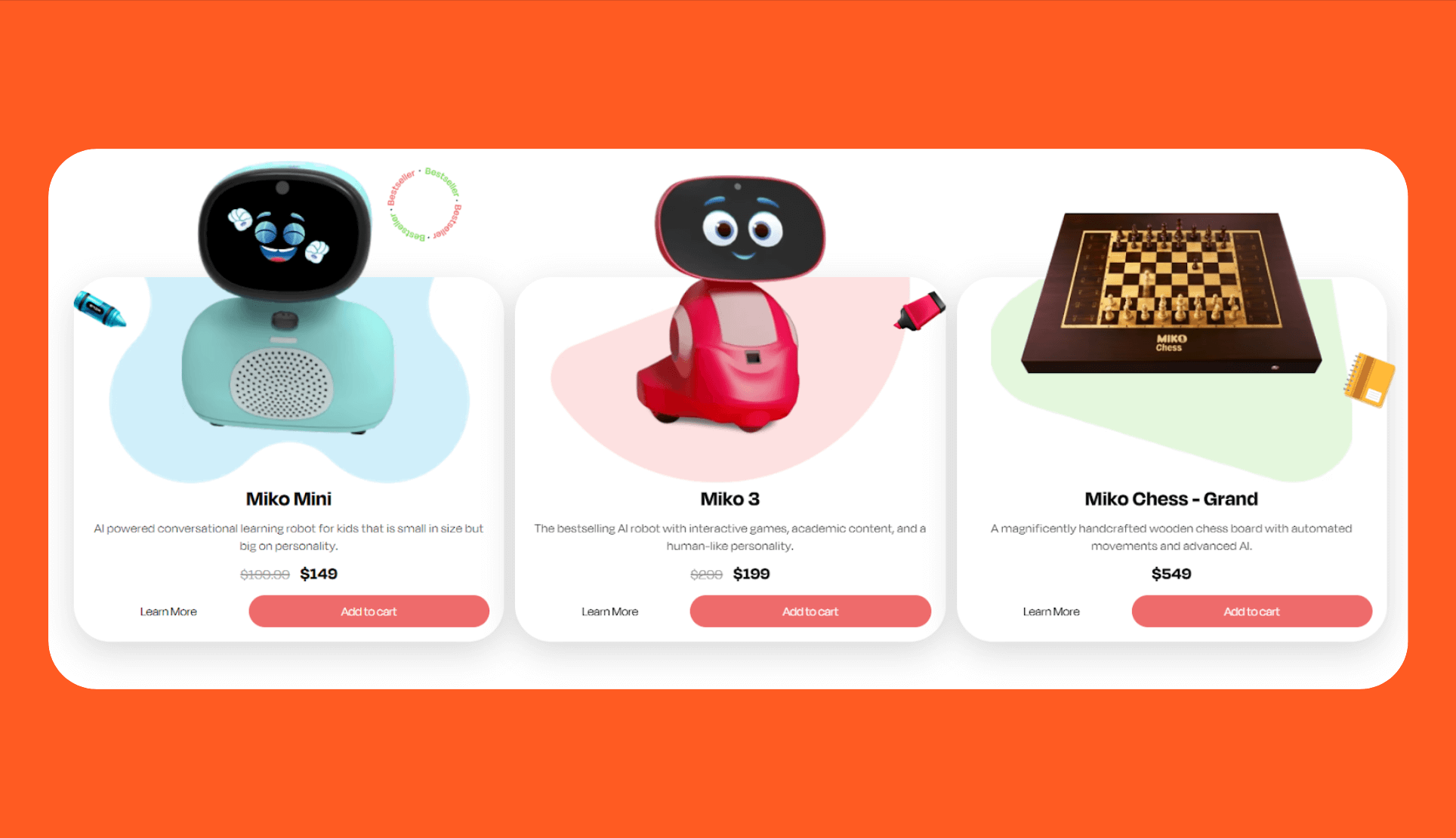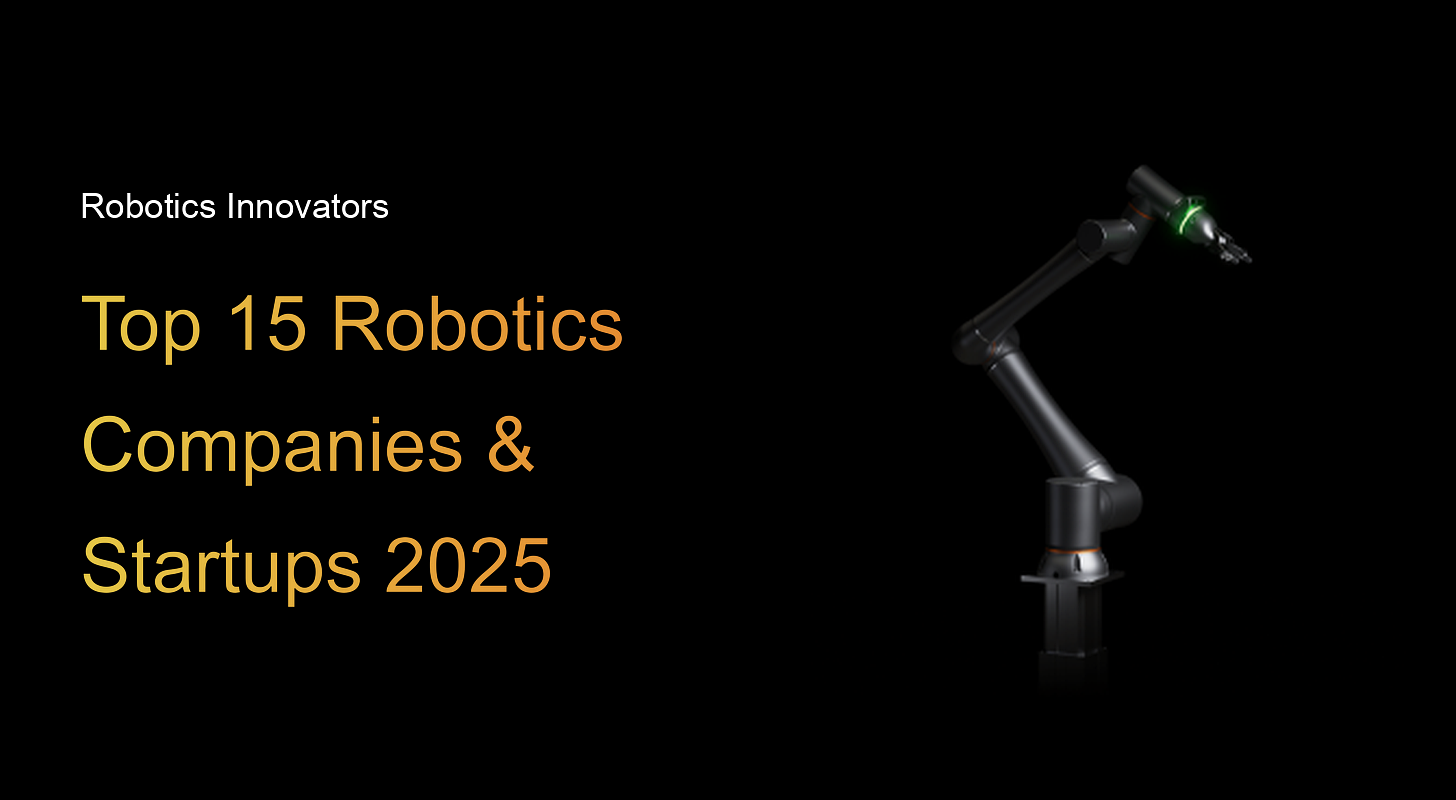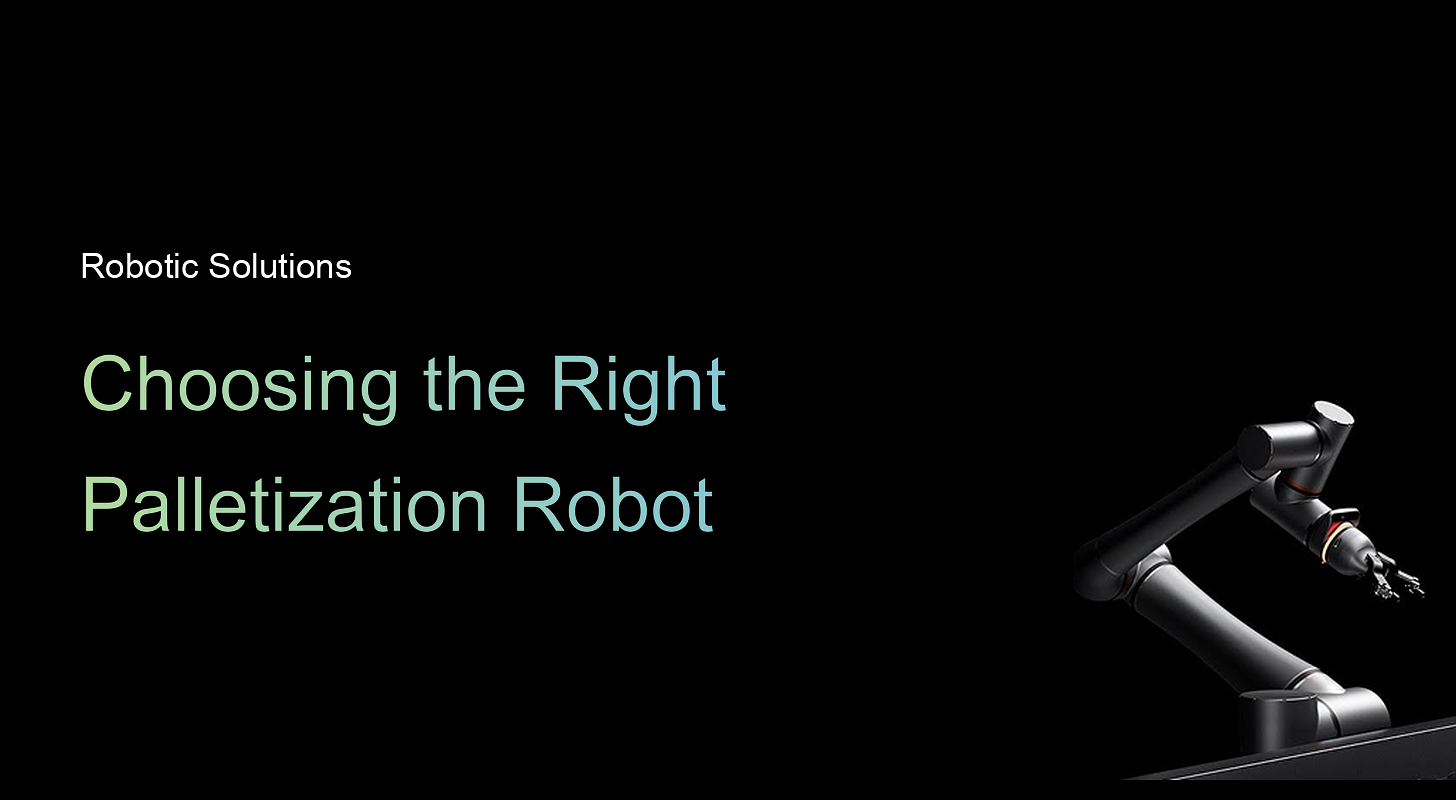Ever wondered how robots work? Robots sense their environment, process data, and act through motors or actuators.
Robots are part of daily life in 2025, from assembly lines and warehouses to classrooms and homes. The word “robot” comes from the Czech term “robota”, meaning forced labor, which was first used in a 1921 play.
Since then, robots have shifted from science fiction to real-world machines that assemble cars, deliver packages, assist in surgery, and clean our floors.
Understanding sensors, control systems, software, and end effectors gives beginners a clear picture of robots, how they function, and why they will continue to transform industry and everyday life.
How do robots work? Mechanics and logic
Robots work in a continuous cycle where sensors collect data, the control system processes it, and actuators carry out the response. This loop lets robots operate with accuracy and adapt to different conditions.
- The process starts with sensors. A camera might detect the position of an object, or a proximity sensor might signal when the robot is near a wall. This information is sent to the control system.
- The control system interprets the sensor data, applies programmed instructions, and decides the next move. In simple robots, this might be a straightforward command like “move forward two steps.” In advanced robots, it may involve path planning, obstacle avoidance, or AI-based decision-making.
- The decision is then passed to actuators, which produce the physical movement. The robot’s end effector, like a gripper, tool, or other attachment, executes the actual task.
This loop repeats constantly. For example, a warehouse robot senses its path, adjusts its wheels to stay aligned, and updates its motion if something blocks the way.
With artificial intelligence and machine learning, robots can even improve their performance over time by analyzing past actions and adjusting their behavior.
Robotics basics
Robotics is the field that combines engineering, computer science, and programming to design machines that can perform physical tasks with minimal human input. The goal is to create systems that extend human capabilities, automate repetitive or dangerous work, and solve problems in manufacturing, healthcare, logistics, and daily life.
Whether it's a robotic arm welding steel frames in a factory or a warehouse robot navigating crowded aisles, robotics brings together mechanical parts, software, and sensors to turn commands into real-world action.
What are robots?
A robot is a programmable machine that combines three key abilities: sensing its surroundings, making decisions based on that data, and carrying out physical actions. This separates robots from simpler automated machines. A washing machine follows preset cycles but can't adapt, and a conveyor belt moves items but has no awareness. A robot does both; it reads its environment and adjusts its behavior accordingly.
Robots range from basic machines, like a vacuum bot that follows programmed paths, to advanced systems that use artificial intelligence to adapt in real time. What makes a robot a robot is this blend of mechanical parts, sensors, and a control system that decides what action to take.
Industrial robots, mobile drones, and service robots are all examples of machines built for specific purposes. The common thread is that they are designed to do work, either by automating repetitive tasks or by assisting humans in areas where precision and consistency matter most.
Four main types of robots
The four main types of robots are industrial robots, service robots, mobile robots, and cobots. Each type is designed for specific environments and tasks.
Key components of a robot
The key components of a robot are the parts that allow it to sense, think, and act. Every robot, no matter how simple or advanced, is built from these core elements, and together they explain what makes a robot work.
- Sensors give robots awareness of their environment. Cameras provide vision, LiDAR maps surroundings, force sensors measure pressure, and proximity sensors prevent collisions.
- The control system processes input from sensors, executes programmed instructions, and sends commands to the actuators. In industrial robots, this is often a dedicated controller box, while in smaller robots, it may be a microprocessor or embedded computer.
- Software and programming decide how the robot behaves. Programs can be simple routines for repeating movements or complex AI models that allow adaptation. Beginners can explore this through visual programming or coding platforms, while advanced robots use full operating systems and machine learning frameworks.
- Motors and actuators turn commands into motion. Electric servo motors rotate robotic arms, pneumatic pistons push grippers, and hydraulic actuators move heavy loads.
- End effectors are the “hands” or tools attached to the robot. These could be grippers that pick up objects, welding torches, screwdrivers, or even surgical instruments.
- Power supply provides the energy to run motors, sensors, and processors. Large robots typically plug into the electrical grid, while mobile platforms rely on rechargeable batteries. Some heavy-duty systems even use hydraulic or pneumatic power for extra force.
- Mechanical structure could be the steel frame of an industrial arm, the lightweight chassis of a drone, or the plastic shell of a home assistant. The structure determines how strong the robot is, how far it can reach, and what environments it can handle.
What do robots do? Real-world applications
Robots do real work in factories, warehouses, hospitals, and homes. Their applications depend on the environment, from welding cars to delivering medicine or cleaning floors.
Here are the main areas where robots are transforming how work gets done:
Robots in manufacturing
In manufacturing, automotive plants rely heavily on six-axis industrial arms for welding, painting, and assembling parts. At Tesla’s Gigafactories, robots apply paint coatings with perfect consistency, while in Toyota plants, robotic arms weld steel panels at high speed.
In electronics, Foxconn is training robots to pick and place objects, insert cables, and assist in assembly tasks. These robots are built for nonstop operation, delivering accuracy and efficiency that humans alone cannot sustain.
Standard Bots Core also plays a role here. The six-axis cobot handles CNC tending, packaging, and assembly with ±0.025 mm repeatability, giving small and mid-sized manufacturers access to automation once limited to big plants.
.png)
Robots in logistics
Warehouses and supply chains depend on mobile robots to keep goods moving. Amazon’s fulfillment centers use fleets of mobile robots to bring whole shelving pods to human packers. This cuts down walking time, boosts order speed, and increases packing efficiency.
Logistics hubs also deploy automated guided vehicles (AGVs) to move pallets and containers across long distances. More advanced autonomous mobile robots (AMRs) use LiDAR and cameras to navigate crowded warehouse aisles safely without fixed paths. The result is faster order processing, fewer bottlenecks, and reduced labor strain.
Locus Robotics’ autonomous pickers are another example. These AMRs navigate busy aisles and bring items directly to packers, boosting speed without fixed paths.

Robots in healthcare
In healthcare, surgical robots like da Vinci enable minimally invasive surgery by letting surgeons control precise robotic instruments. Hospitals use delivery robots to carry medication and supplies between wards, reducing the workload on staff.

UV-disinfection robots roam empty rooms to sanitize surfaces and lower infection risks. In elder care, Japan has adopted companion robots like PARO, a therapeutic seal robot that helps patients with dementia by providing emotional comfort.
These applications show how robots can both support medical professionals and directly benefit patients.
Robots in households
In households, the most common example is the robotic vacuum cleaner, such as iRobot’s Roomba, which maps rooms, avoids obstacles, and cleans floors with minimal supervision. Lawn-care robots trim grass using GPS guidance and obstacle sensors, freeing homeowners from routine yard work.
More advanced companion robots, like Miko Mini, engage children with interactive learning games and speech recognition. These consumer robots demonstrate how the same sensing–decision–action cycle found in industrial machines can make daily chores and learning easier for families.

How are robots made?
Robots are made in a structured process that takes an idea from concept to a working machine. Each stage, including design, prototyping, assembly, and programming, adds a layer that makes the robot more capable and closer to its final role.
Design
Design is the planning stage where engineers define what the robot must do and how it will achieve it. A robot meant for surgery must be small, precise, and sterile-friendly, while a warehouse robot needs long battery life and reliable navigation. Designers map out the robot’s structure, dimensions, and weight distribution using CAD (computer-aided design) software.
They also choose the right materials. Lightweight aluminum for speed, stainless steel for durability, or plastics for cost efficiency. At this stage, teams also decide which sensors, actuators, and power sources the robot will need.
Prototyping
Prototyping turns design into reality through early test models. These prototypes may not look like the final product, but they allow engineers to check motion, balance, and sensor accuracy. For example, a prototype drone might be tested for stability in flight, or a robotic arm might be checked for how smoothly its joints rotate.
Prototypes can be built with 3D-printed parts, off-the-shelf components, or simplified electronics. This step is essential because it reveals flaws such as weak joints, overheating motors, or inaccurate sensors before full-scale production.
Assembly
Assembly is where the robot takes its physical shape. Teams build the mechanical frame, attach motors and actuators, and install wiring that connects everything to the control system. Industrial robots may require heavy-duty assembly lines and precision calibration to achieve repeatability within fractions of a millimeter.
Smaller robots, like educational kits, can be assembled by hand in classrooms to teach students about wiring and mechanics. During assembly, teams run subsystem tests to verify sensor readings, motor response, and power stability.
Programming
Programming gives a robot a function. Without it, the machine is only hardware. Engineers load instructions into the control system, ranging from simple routines like “move forward and stop” to complex path-planning algorithms.
Industrial robots often use dedicated programming languages or teach pendants, while modern platforms support Python, ROS (Robot Operating System), or even no-code drag-and-drop tools. AI-enabled robots also go through training, where they process large amounts of data to learn tasks like recognizing objects or predicting motion.
For beginners, hands-on educational robots provide an accessible way to explore coding and understand how software drives behavior.
Common misconceptions about robots
Common misconceptions about robots include the ideas that they all look human, think like people, or replace every job. In reality, most robots are task-specific machines that follow programming and support human work.
- Robots are not always humanoid: When people think of robots, they frequently picture human-like machines with faces and arms. In reality, most robots don’t look human at all. Industrial robots are usually mechanical arms bolted to the floor, and mobile robots may look like wheeled carts or drones. The design depends on the task.
- Robots don’t think like humans: Another common belief is that robots “think” the way we do. In truth, robots follow programming and logic. They process sensor data, make calculations, and act on rules given to them by humans. Even AI-driven robots don’t have consciousness. They use algorithms to detect patterns and adjust behavior.
- Most robots aren’t fully autonomous: Many imagine robots working entirely on their own, but most require human input. Some run fixed routines, while cobots are guided by operators who “teach” them tasks. Even self-driving cars still rely on updates, remote monitoring, and oversight.
- Robots are not replacing humans everywhere: A common misconception is that robots will eliminate all jobs. In reality, they automate repetitive or dangerous work while creating new opportunities. A robot may handle heavy lifting in a warehouse, but humans still manage systems, make complex decisions, and design automation.
The future of robotics
The future of robotics is shaped by artificial intelligence, group systems, new materials, and easier access. These changes show how robots will keep spreading into factories, hospitals, schools, and homes.
- AI integration. AI integration lets robots study sensor data, recognize objects, and adjust actions. In warehouses, they reroute when aisles are blocked; in surgery, AI assists precise instrument control.
- Swarm robotics uses many small robots working together like insect colonies. Each robot follows simple rules, but as a group, they can map disaster sites, check crops, or explore areas that are unsafe for people. If one robot fails, the rest keep working, which makes the system reliable.
- Soft robotics uses flexible materials like silicone instead of hard metal. These robots can handle delicate items such as fruit or human tissue without causing damage. They also move in ways that rigid machines cannot, making them useful in healthcare and food industries.
- Accessibility is improving as robots become easier to buy and use. Small collaborative robots give businesses affordable automation, while educational robots introduce students to coding and AI. This makes robotics useful not only for large companies but also for classrooms and smaller shops.
Summing up
Robots are practical machines that sense, decide, and act to make work safer and more efficient. By understanding how robots work, beginners gain a clear view of the basics of robotics and the role these systems play in factories, hospitals, warehouses, and even homes.
As technology advances, robots will keep evolving, but the fundamentals of mechanics, control, and programming remain the foundation.
Looking to upgrade your automation game? Standard Bots Thor is built for big jobs, while Standard Bots Core is the perfect six-axis cobot addition to any automation setup, delivering unbeatable throughput and flexibility.
- Affordable and adaptable: Core costs $37K. Thor lists at $49.5K. Get high-precision automation at half the cost of comparable robots.
- Perfected precision: With a repeatability of ±0.025 mm, both Core and Thor handle even the most delicate tasks.
- Real collaborative power: Core's 18 kg payload conquers demanding palletizing jobs, and Thor's 30 kg payload crushes heavy-duty operations.
- AI-driven simplicity: Equipped with AI capabilities on par with GPT-4, Core and Thor integrate smoothly with end-of-line operations for advanced automation.
- Safety-first design: Machine vision and collision detection mean Core and Thor work safely alongside human operators.
Schedule your on-site demo with our engineers today and see how Standard Bots Core and Thor can bring AI-powered greatness to your shop floor.
FAQs
1. How do robots work in simple terms?
In simple terms, robots work by following a continuous loop of sensing, processing, and acting. Sensors gather information like a camera recognizing objects or a proximity sensor detecting a wall. The control system, which acts as the brain, processes that data and decides what action to take. Actuators such as motors or hydraulics then turn those instructions into motion.
For example, a robot vacuum senses dust, maps the room, and drives its wheels to clean specific areas. In factories, welding robots use the same principle, reading sensor input to place precise welds over and over again.
2. What are the main components that make a robot work?
The main components that make a robot work are its structure, control system, power supply, software, actuators, sensors, and end effectors. The structure forms the robot’s body, whether it’s a steel arm or a lightweight drone frame. The control system functions as the brain, turning data into instructions.
Power supplies provide energy, from rechargeable batteries in mobile robots to grid power for large industrial arms. Actuators and motors create movement, while sensors give the robot awareness of its surroundings. End effectors let the robot complete a task.
3. What is robotics, and what do robots do?
Robotics is the field of engineering and science that focuses on designing, building, and programming robots, and what robots do depends on their type and purpose. Industrial robots assemble cars, weld steel frames, and handle heavy parts on production lines. Mobile robots transport goods in warehouses, fly drones over farmland, or navigate busy streets as self-driving vehicles.
Service robots help people in hospitals, hotels, or homes by delivering medication, cleaning, or providing companionship. Collaborative robots, or cobots, share workspaces with humans in labs and workshops, performing packaging, inspection, or machine tending.
4. How do robots learn and adapt to new tasks?
Robots learn and adapt to new tasks through artificial intelligence and machine learning, which allows them to improve over time rather than only repeat fixed instructions. They analyze large amounts of data, recognize patterns, and adjust their behavior based on experience.
A warehouse robot, for example, can learn faster delivery routes after repeated trips. A vision-based robot in a factory can refine its ability to identify defective products by processing more images. While robots don’t “think” like humans, they can use algorithms to make smarter choices as conditions change.
5. How are robots made from start to finish?
Robots are made from start to finish through four main steps: design, prototyping, assembly, and programming. In the design stage, engineers decide what the robot must do, select materials, and create models using CAD software. Prototyping produces test versions that help identify problems, such as weak joints or inaccurate sensors, before mass production.
The assembly puts all parts together into a single functioning machine. After assembly, programming defines the robot’s behavior, from simple repetitive actions to AI-driven decision-making. Industrial robots may use specialized languages, while educational robots often include drag-and-drop software for beginners.
6. What are the main types of robots and their uses?
The main types of robots and their uses are grouped into four categories: industrial robots, service robots, mobile robots, and cobots. Industrial robots are used in factories for welding, painting, and assembly. Service robots appear in hospitals delivering supplies, in hotels guiding guests, and in homes cleaning floors or assisting with daily chores.
Mobile robots include warehouse AGVs, autonomous drones, and self-driving cars that move independently through their environments. Cobots are designed to share spaces with humans, performing flexible jobs like packaging, machine tending, or lab testing.
brighter future
Join thousands of creators
receiving our weekly articles.










